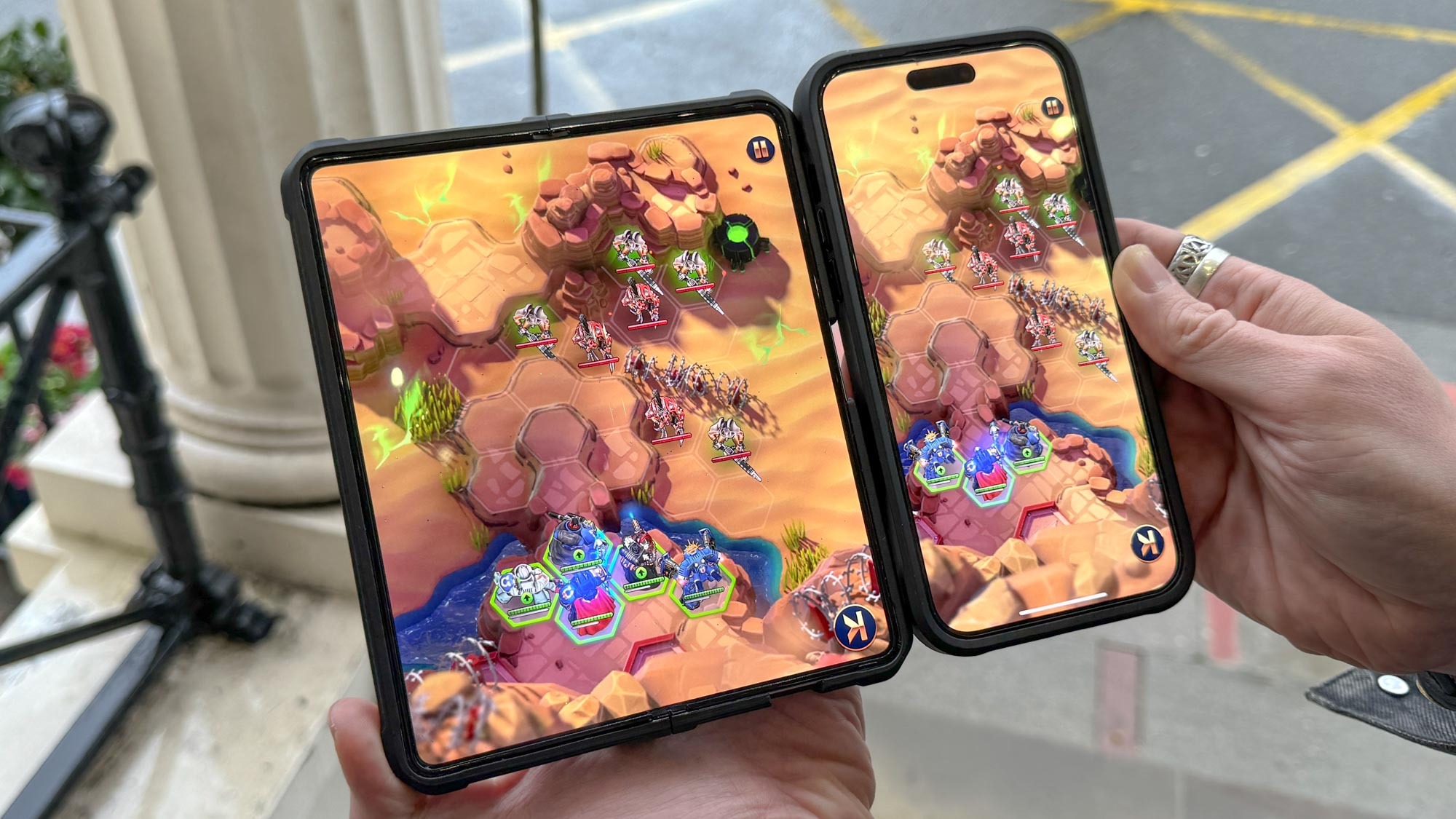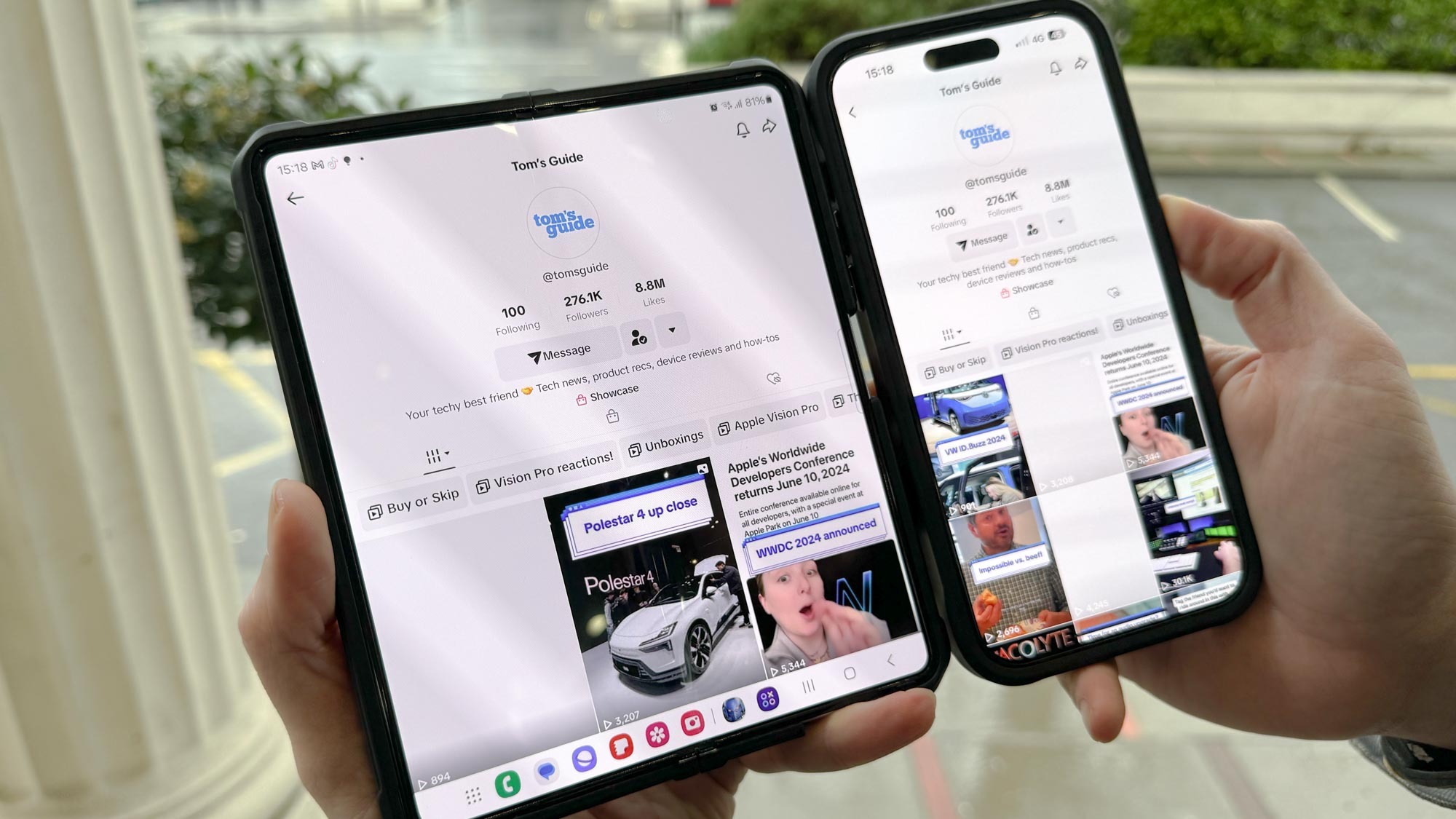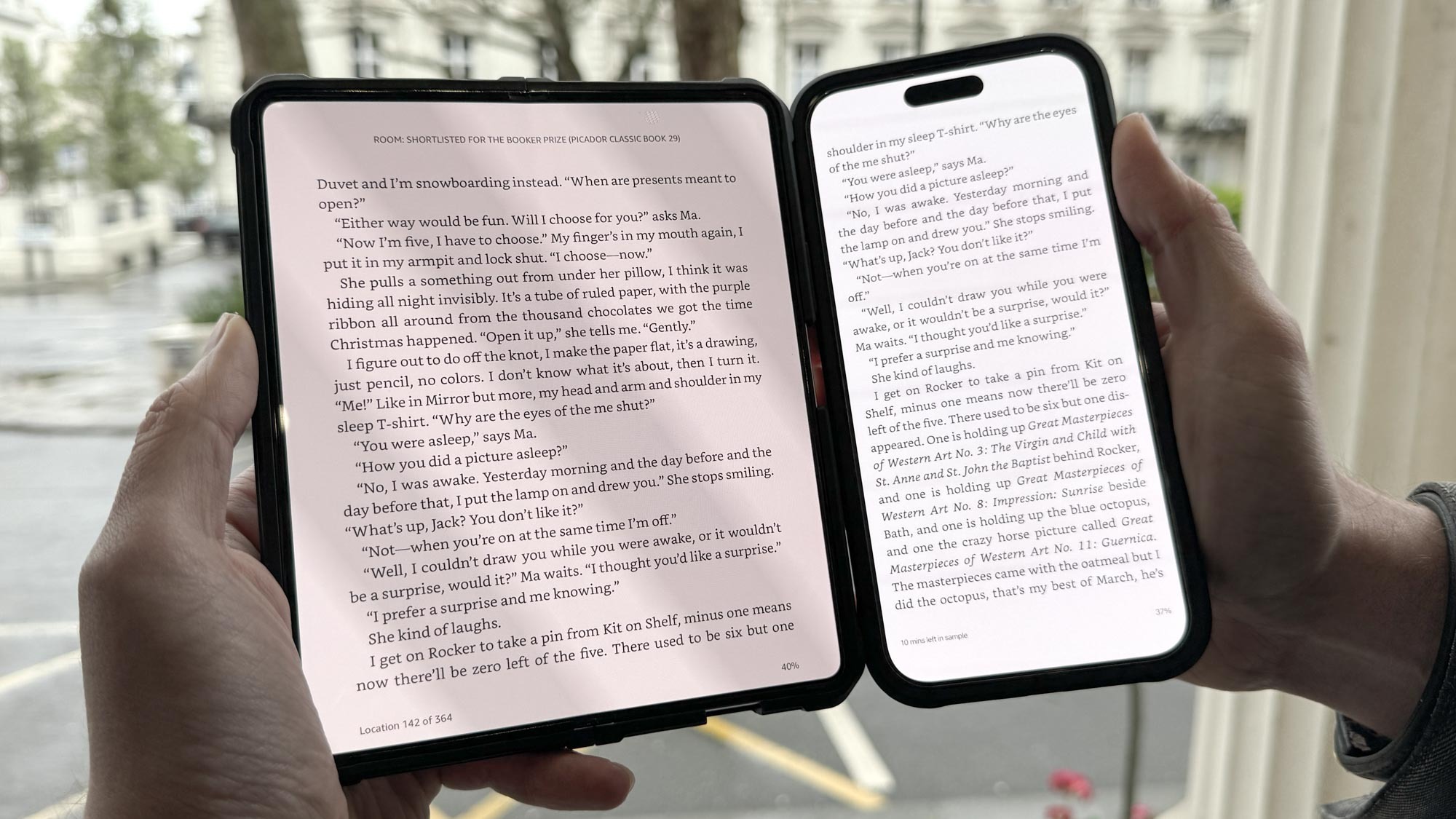it’s me recently converted into foldable phonesfinding that I enjoy using devices like Samsung Galaxy Z Fold 5 more than I thought I would. There’s something about the experience that struck me as interesting, though: some apps seemed better suited to foldable screens than others. Was it just a coincidence? Or are certain types of apps simply better on foldable phones?
With this in mind, I took five types of apps that I usually use and ran them on both the Galaxy Z Fold 5 and iPhone 14 Pro Max. My goal: to see if some apps are better suited for the larger screen of a foldable phone.
I chose not to include streaming apps — YouTube, Netflix, or Disney Plus, to name three — because I thought the larger foldable screen would give those apps a natural edge. Instead, I wanted to include the types of apps that do different things for users, whether it’s social, entertainment, or work. In each section, I’ll include one basic app or a few different apps that fall into that category.
Flip Phone App Test Round 1: Gaming Apps

For this round, I downloaded three games, each offering something different, to see which phone I’d prefer to play those titles on.
I started with Warhammer 40,000: Tacticus, a turn-based tactical game set in Warhammer universe. This is the most graphically advanced game of the three I tested and really takes advantage of the expansive display of the Galaxy Z Fold 5. The map also feels larger due to the expanded display size, even if the actual map isn’t any bigger on the device.
Angry Birds 2 certainly looked better and better on the Galaxy Z Fold 5, but I found myself playing this game more on the iPhone 14 Pro Max. It all comes down to how your thumbs move and how you hold the phone. I found that using my thumb to pull the rubber band worked better when holding the iPhone up compared to holding the foldable phone in the same position.
The last game I tested was Hearth, a card game based on the MMO game World Of Warcraft. This wasn’t really a contest — the Galaxy Z Fold 5’s larger display made things more enjoyable except in one respect. When I used the app in full-screen mode on the Galaxy Z Fold 5, Hearthstone’s graphics looked much blurrier than on the iPhone. I guess the games are not fully optimized for the Galaxy Z Fold 5 screen.

Starting with the app formerly known as Twitter, I found the renamed X to offer a better experience on my iPhone. The app was easier to scroll through, and that larger Galaxy Z Fold 5 screen either stretched things out or added too much dead space.
WITH Tiktok, there’s no doubt that the Galaxy Z Fold has a better shape for watching videos — they just look better on a bigger screen. While the larger screen still isn’t conducive to mindless scrolling, it generally provided a better experience than the iPhone. I also found that video streaming was better on the Galaxy Z Fold 5, as the editing process involved significantly less stress on the larger screen.
I ended up testing Snatch on both devices, with an emphasis on a chat feature that works with videos. Interestingly, I thought the iPhone handled the chat experience better because of the terrible Twitch optimization for the Galaxy Z Fold 5. The video looked good, but for some reason, the Samsung phone would cause the chat to disappear and not show what was being typed. This problem did not appear on the iPhone, which easily divided the chat to keep everything neat and organized.
Flip Phone App Test Round 3: Web Browsers

I focused on Google Chrome for the browser comparison because that app works best on both Android and iOS devices. All in all, both phones provided almost the same browsing experience, at least initially.
However, I soon discovered that it was Galaxy AI features added to the Galaxy Z Fold 5 by Samsung One UI update 6.1 were too useful to be ignored. For example, Search circle it’s proven to be a lifesaver for those moments when you see a picture and then spend the next five minutes trying desperately to remember where you saw it before. Still, that’s the bigger advantage of this particular phone rather than foldable phones in general.
When it comes to web browsing, I find myself using the iPhone more, if only for the ease of searching. It was a simple matter of pulling out the phone and checking Chrome to quickly find the answer. I know the same process works on the cover of a foldable device, although I feel that this ignores the main strength of the foldable design. If you’re just going to search for a flip screen, why not get a regular phone and save some money?
Flip phone application test Round 4: Office applications

I focused on the three applications that make up Microsoft Office — Word, Excel, and PowerPoint. Starting with Word, I found that the difference between using this application on a foldable and a regular smartphone is not as clear as one might think. Galaxy Z Fold 5 lets you turn your phone into a mini desktop that shares a document and keyboard. This makes typing much easier, at least in the end.
In practice, I actually found it quite difficult to get any real typing speed with this setting, but I think that could be due to not being used to the format. At the same time, I was able to type faster on the iPhone version, although the formatting wasn’t always easy to navigate, and after a while my hands started cramping.
Both PowerPoint and Excel benefit from a larger screen on a foldable phone. I had difficulty working with Excel cells on the iPhone because I wasn’t always sure which one I selected. This seems more like a formatting issue, but PowerPoint was a mess to use on the iPhone.
Folding phone application test Round 5: E-readers

The last category I tested is close to me. I never really liked it Kindles a lot, but recently I was in a situation where I had to use the Kindle app on my phone. I’ve found that a foldable phone offers a better experience than a dedicated e-reader, even if the size of the device makes it less convenient to use.
That observation continued when I used the e-reader on the iPhone 14 Pro Max. I found that I could take that phone out at any time in a way that I couldn’t with the Galaxy Z Fold 5. The size of the unfolded phones is just too big to handle just to make up for what you’re reading.
Flip Phone App Test: The Verdict
While I would have thought the bigger and more expensive Galaxy Z Fold 5 would be the ultimate winner, my experience using the apps on different types of phones has shown that foldables and non-folds are more evenly matched than I expected. Despite the smaller screen size, the more standard design phone still offers a lot for users. Of course, if you want a phone that can act as a mini desktop computer, a foldable phone is clearly a better option. But if you’re just looking for a device that gets the job done, there’s nothing wrong with going a little more conventional.
For foldable devices to become as common as conventional smartphones, they need to focus on app optimization. The idea of a phone that costs $1799 but can’t run Twitch any better than a year old iPhone seems untenable to me. Let’s hope that doesn’t happen with Samsung Galaxy Z Fold 6 and other foldable phones, which you hope will do a better job of making sure more apps take advantage of their large screen real estate.
Whether or not you’re convinced that a foldable phone should be your next device, check out our ranking for the best phones and ours the best foldable phones to see which devices you should consider. Otherwise, let me know how your experience with apps on big-screen phones has been in the comments below, and if you were surprised by an app that didn’t look great on the foldable screen.